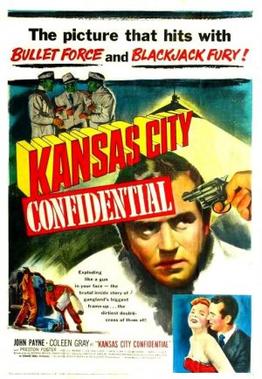Click on the headline to link to a Wikipedia entry for American detective novelist Dashiell Hammett.
Book Review
Woman In The Dark, Dashiell Hammett, Introduction by Robert B. Parker, Alfred A. Knopf, New York, 1988
Dashiell Hammett, along with Raymond Chandler, reinvented the detective genre in the 1930's and 1940's. They moved the genre away from the amateurish and simple parlor detectives that had previously dominated the genre to hard-boiled action characters who knew what was what and didn't mind taking a beating to get the bad guys. And along the way they produced some very memorable literary characters as well. Nick Charles, Sam Spade and Phillip Marlowe are well known exemplars of the action detective. However, on the way to creating these literary works of art Hammett did journeyman's work at the detective genre in various pulp detective magazines and in serial form in popular magazines. The latter is how the short novel under review, Woman In The Dark, began its life.
The late Robert B. Parker, a very fine detective story writer in his own right, noted in the introduction to this work that this plot line, and its twists and turns, represented a very strong example of Hammett’s sense of the randomness of human existence. But also the drive for some regularity, some place to hang one’s hat, as well. Even down at the edges of society, the places where no one really wants to be, the place of kept women, cons, and ex-cons and of those who have the resources to make such dwellers their playthings. The plot line centers on a hardened, take no bull, been around the block, femme fatale, certainly not your typical damsel in distress, who is fed up with the antics of the rich guy who “rescued” her, for a time, the antics of the rich guy who doesn’t like to take no for an answer, especially when he has bought and paid for the merchandise (the femme fatale in this case), and a hard-nosed, hard-luck ex-con (a non-detective for once, if you can believe that) who simply will not go back to prison but who is not adverse to a little romance. And is willing to give, and take, a hard punch, if necessary.
Naturally, as is almost always the case with Hammett, the story line is driven, Hemingway-style, by sparse, functional language. However, for my money, there is just not enough of it to grip the imagination. Other than as an example, arguably a failed example, of Hammett trying to put steamy love interest and hard-boiled guys together on short notice, this novelistic effort could have stayed back in the pulp archives. Or waited to be anthologized, as it was, in the Dashiell Hammett volumes of the Library Of America series. For the real Hammett read The Thin Man or The Maltese Falcon, those two efforts, my friends, are why Hammett is in the American literary pantheon.
Book Review
Woman In The Dark, Dashiell Hammett, Introduction by Robert B. Parker, Alfred A. Knopf, New York, 1988
Dashiell Hammett, along with Raymond Chandler, reinvented the detective genre in the 1930's and 1940's. They moved the genre away from the amateurish and simple parlor detectives that had previously dominated the genre to hard-boiled action characters who knew what was what and didn't mind taking a beating to get the bad guys. And along the way they produced some very memorable literary characters as well. Nick Charles, Sam Spade and Phillip Marlowe are well known exemplars of the action detective. However, on the way to creating these literary works of art Hammett did journeyman's work at the detective genre in various pulp detective magazines and in serial form in popular magazines. The latter is how the short novel under review, Woman In The Dark, began its life.
The late Robert B. Parker, a very fine detective story writer in his own right, noted in the introduction to this work that this plot line, and its twists and turns, represented a very strong example of Hammett’s sense of the randomness of human existence. But also the drive for some regularity, some place to hang one’s hat, as well. Even down at the edges of society, the places where no one really wants to be, the place of kept women, cons, and ex-cons and of those who have the resources to make such dwellers their playthings. The plot line centers on a hardened, take no bull, been around the block, femme fatale, certainly not your typical damsel in distress, who is fed up with the antics of the rich guy who “rescued” her, for a time, the antics of the rich guy who doesn’t like to take no for an answer, especially when he has bought and paid for the merchandise (the femme fatale in this case), and a hard-nosed, hard-luck ex-con (a non-detective for once, if you can believe that) who simply will not go back to prison but who is not adverse to a little romance. And is willing to give, and take, a hard punch, if necessary.
Naturally, as is almost always the case with Hammett, the story line is driven, Hemingway-style, by sparse, functional language. However, for my money, there is just not enough of it to grip the imagination. Other than as an example, arguably a failed example, of Hammett trying to put steamy love interest and hard-boiled guys together on short notice, this novelistic effort could have stayed back in the pulp archives. Or waited to be anthologized, as it was, in the Dashiell Hammett volumes of the Library Of America series. For the real Hammett read The Thin Man or The Maltese Falcon, those two efforts, my friends, are why Hammett is in the American literary pantheon.
